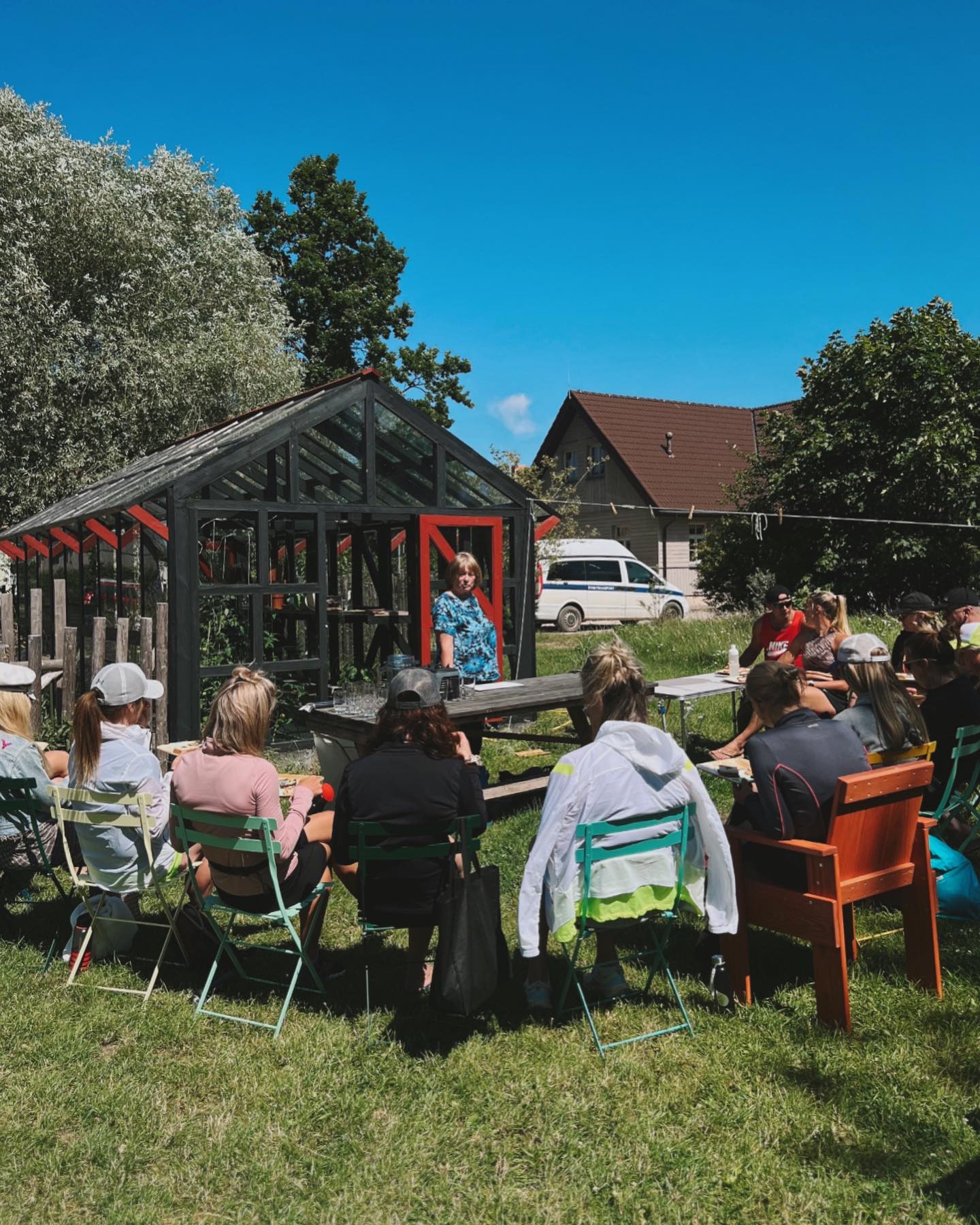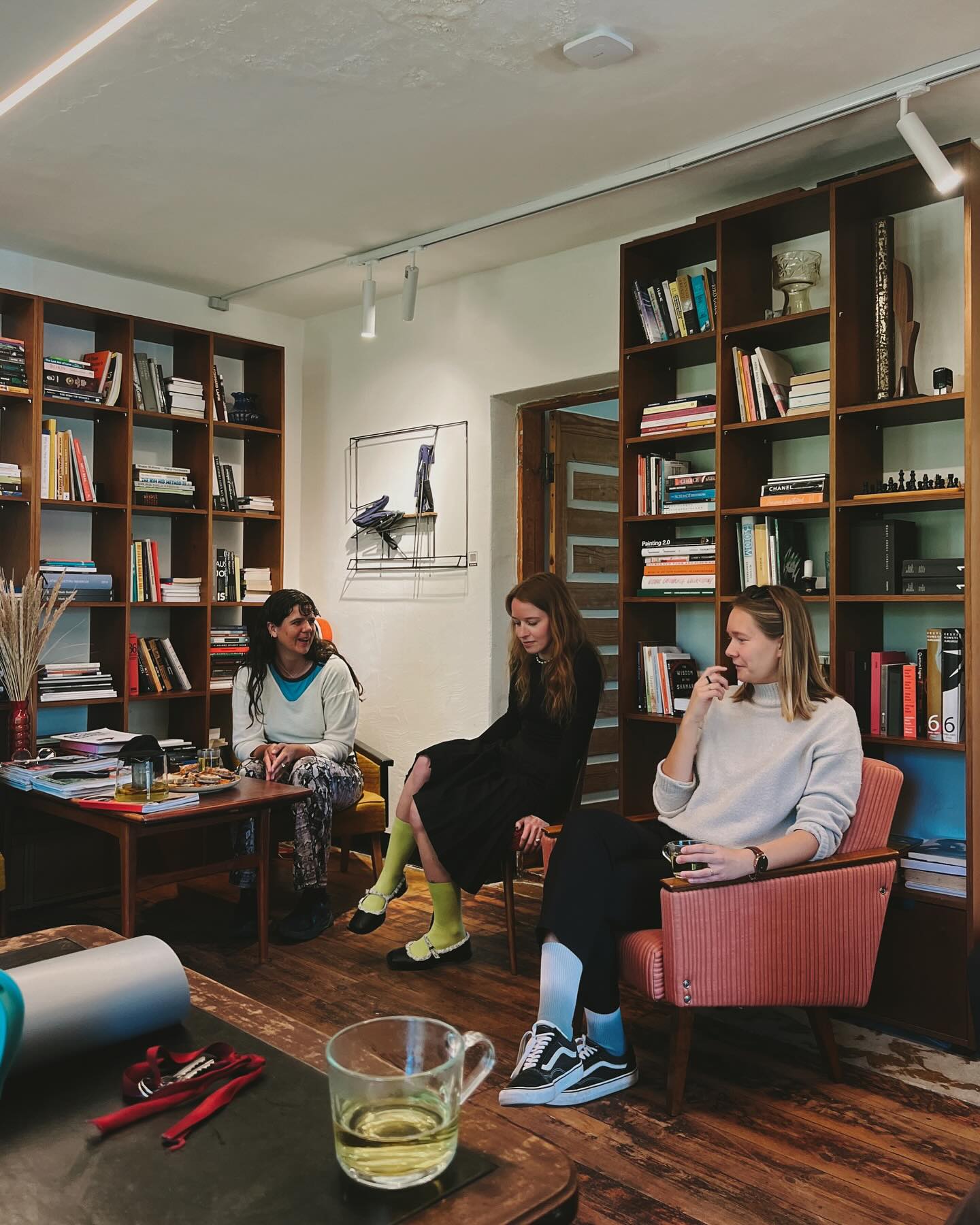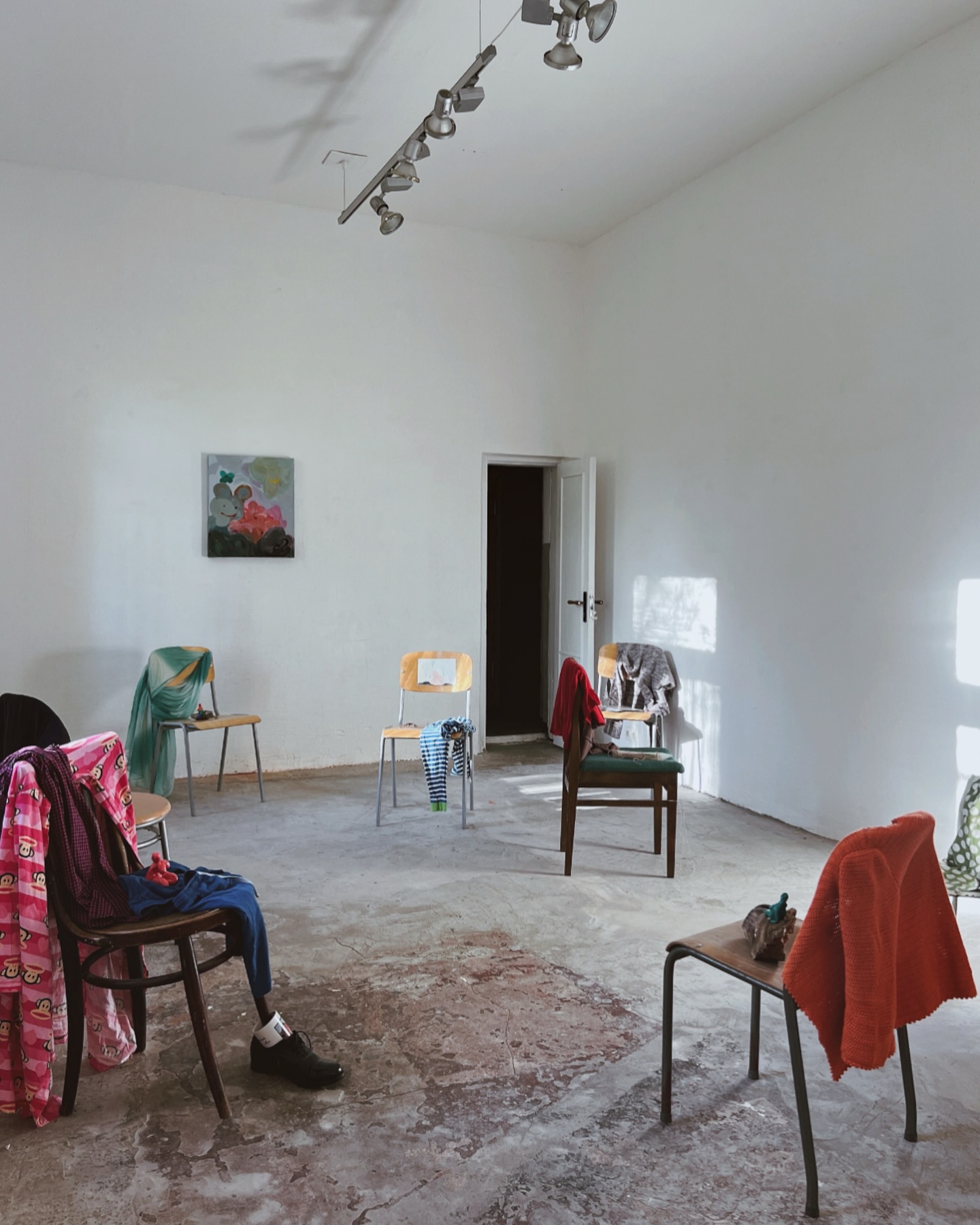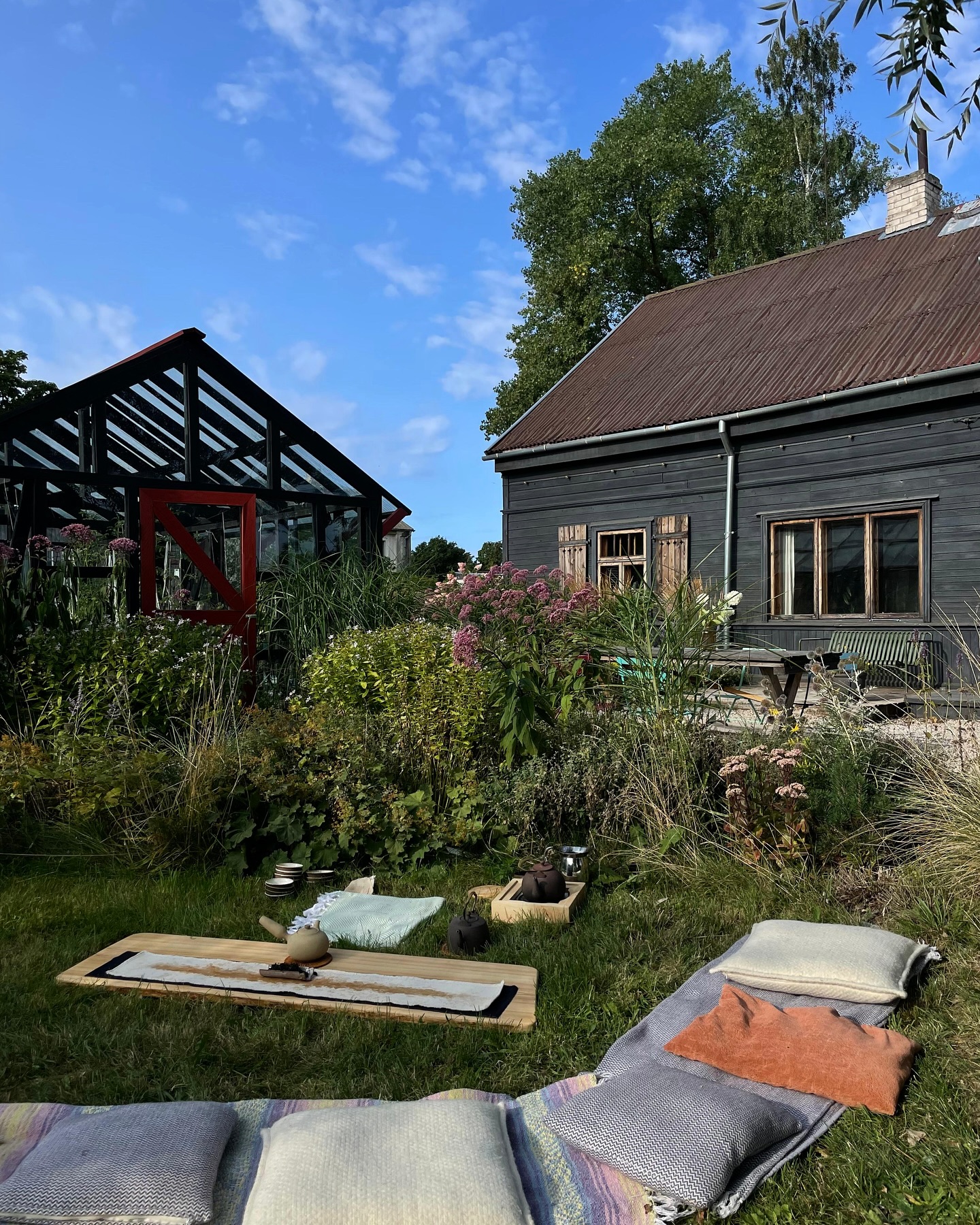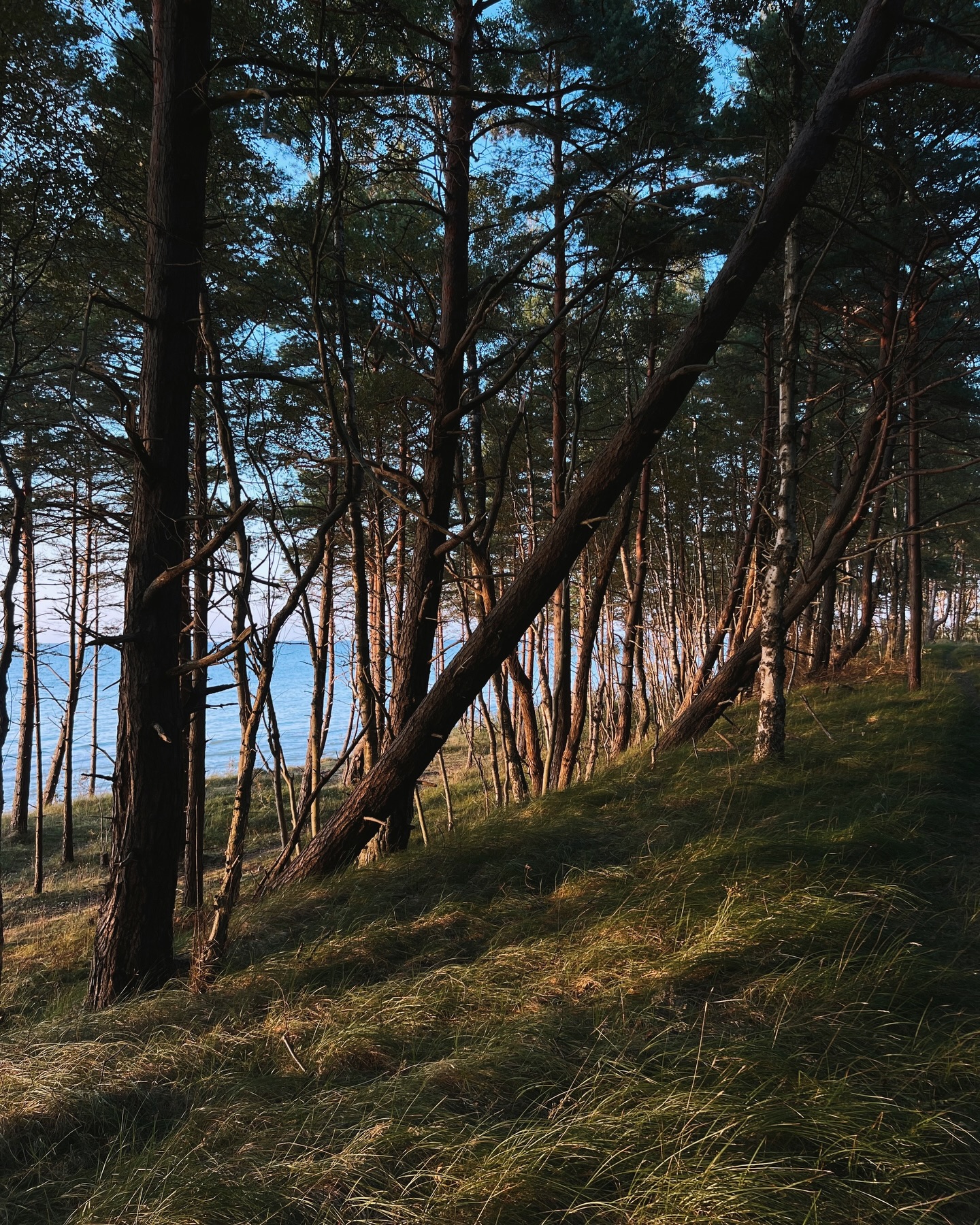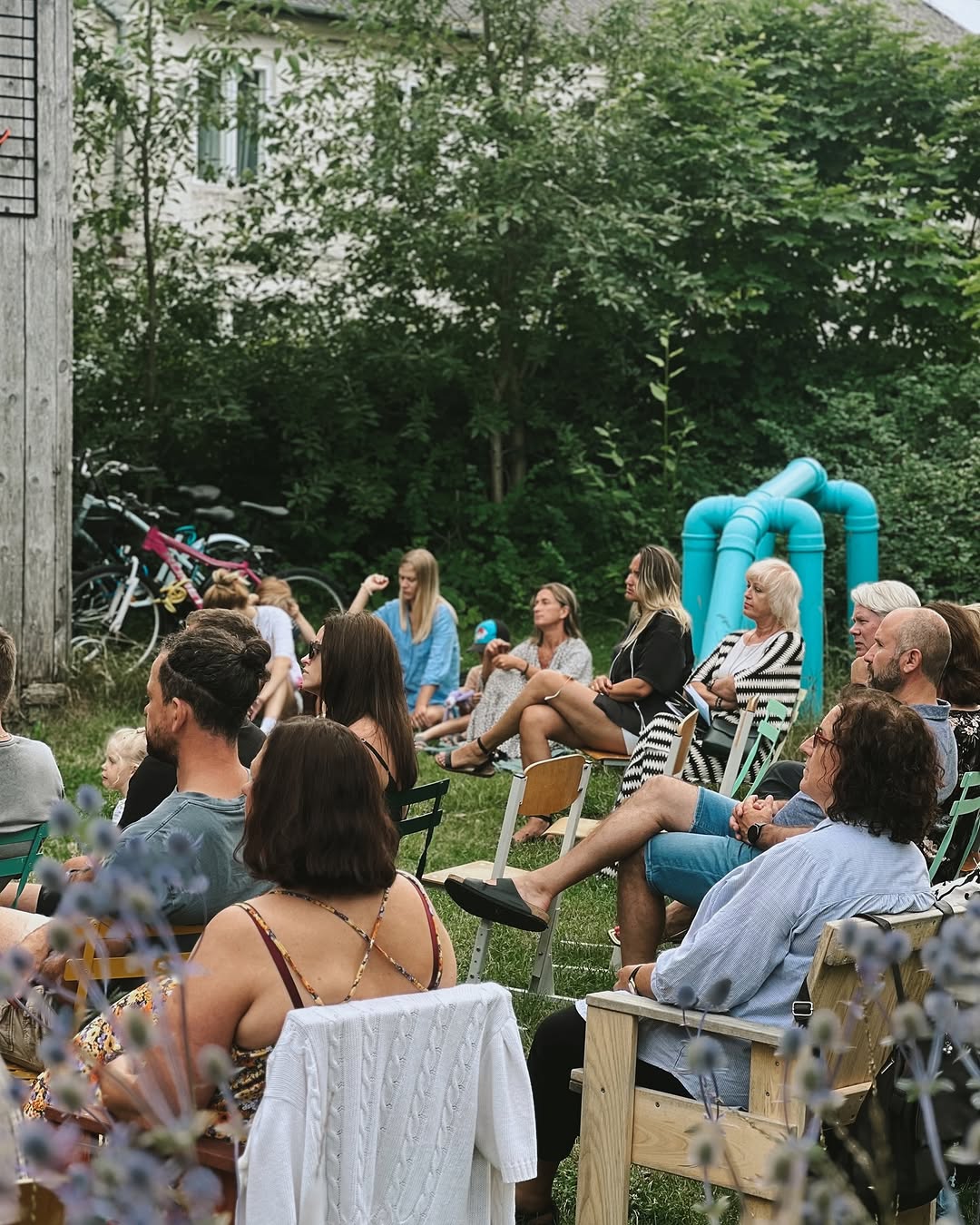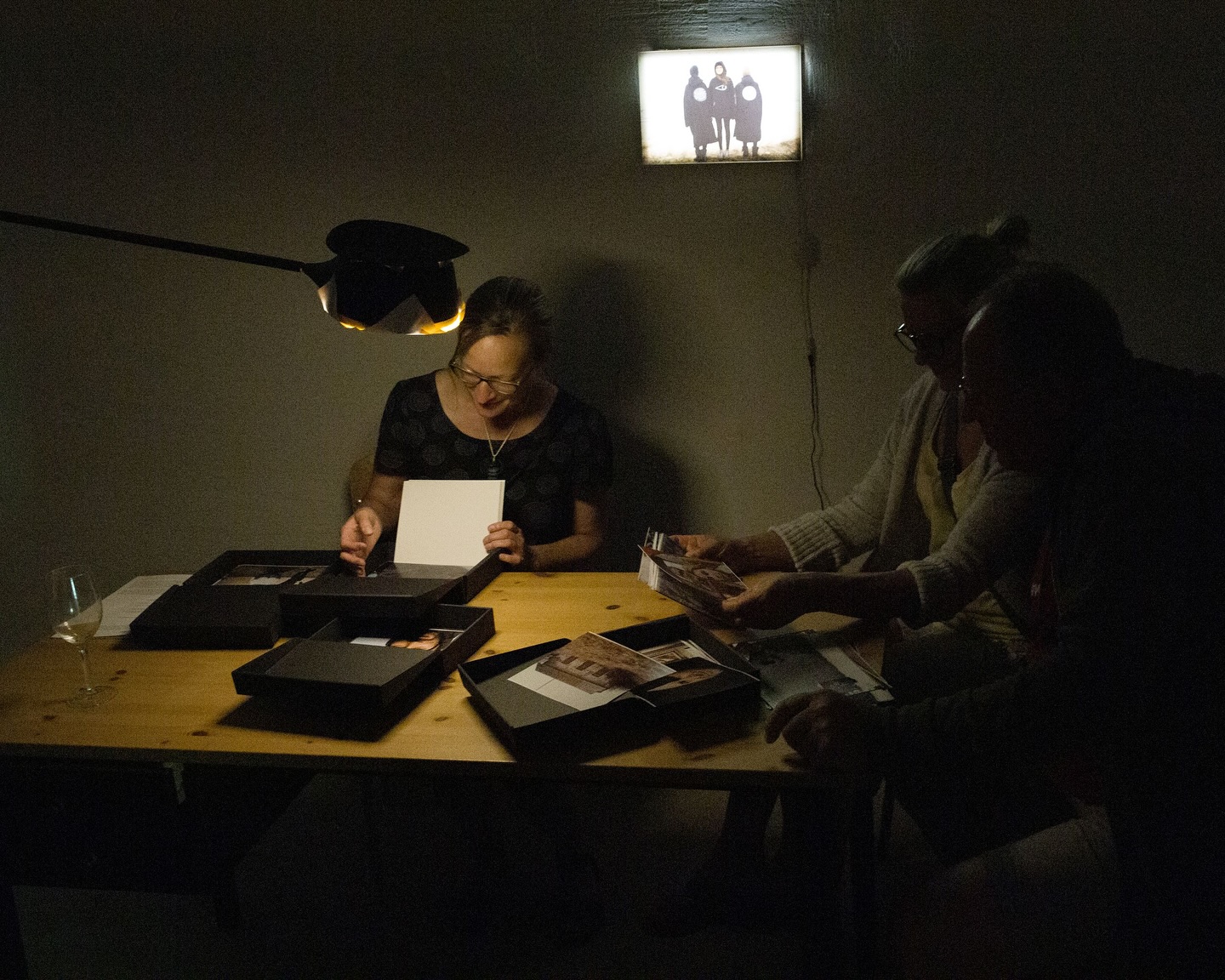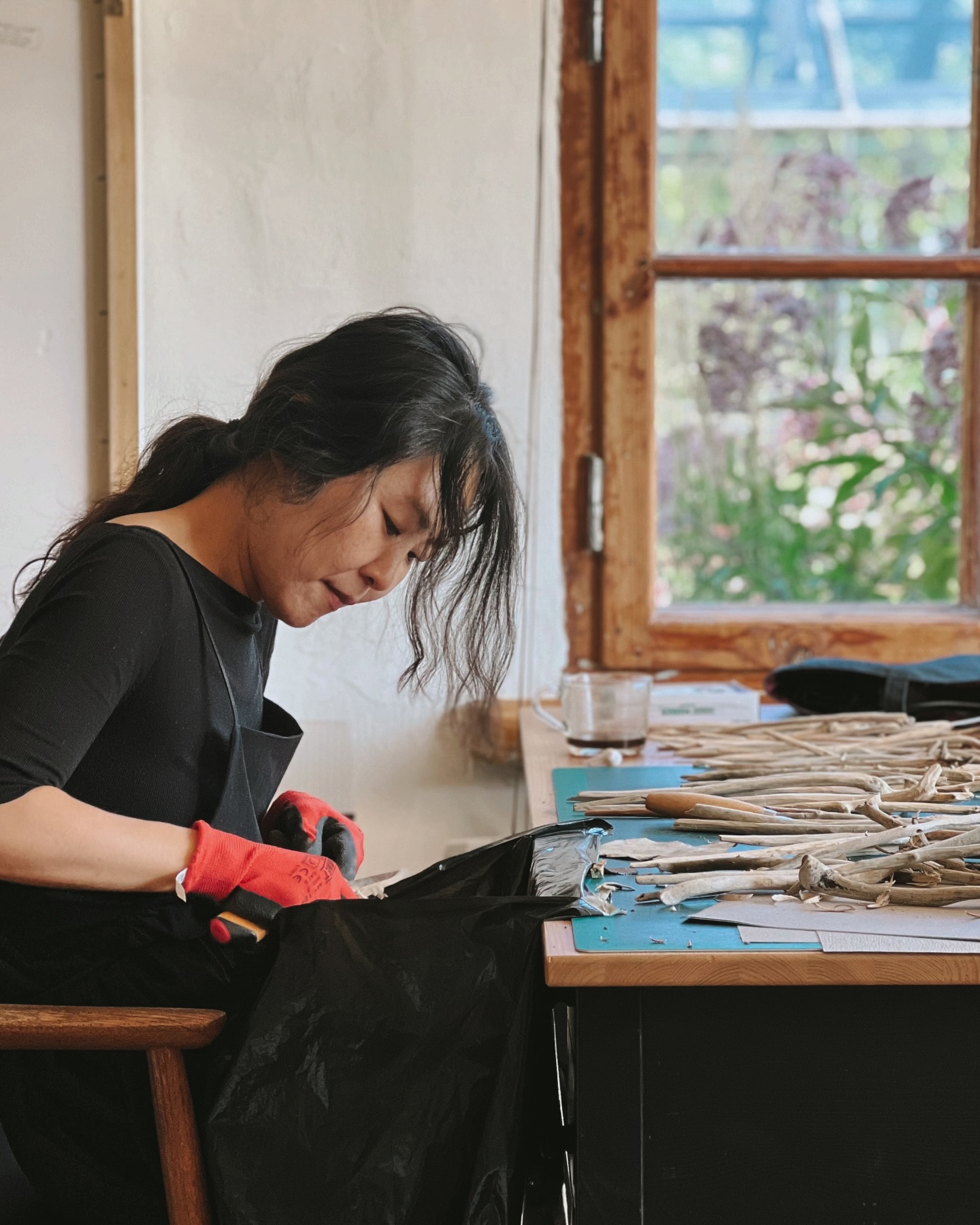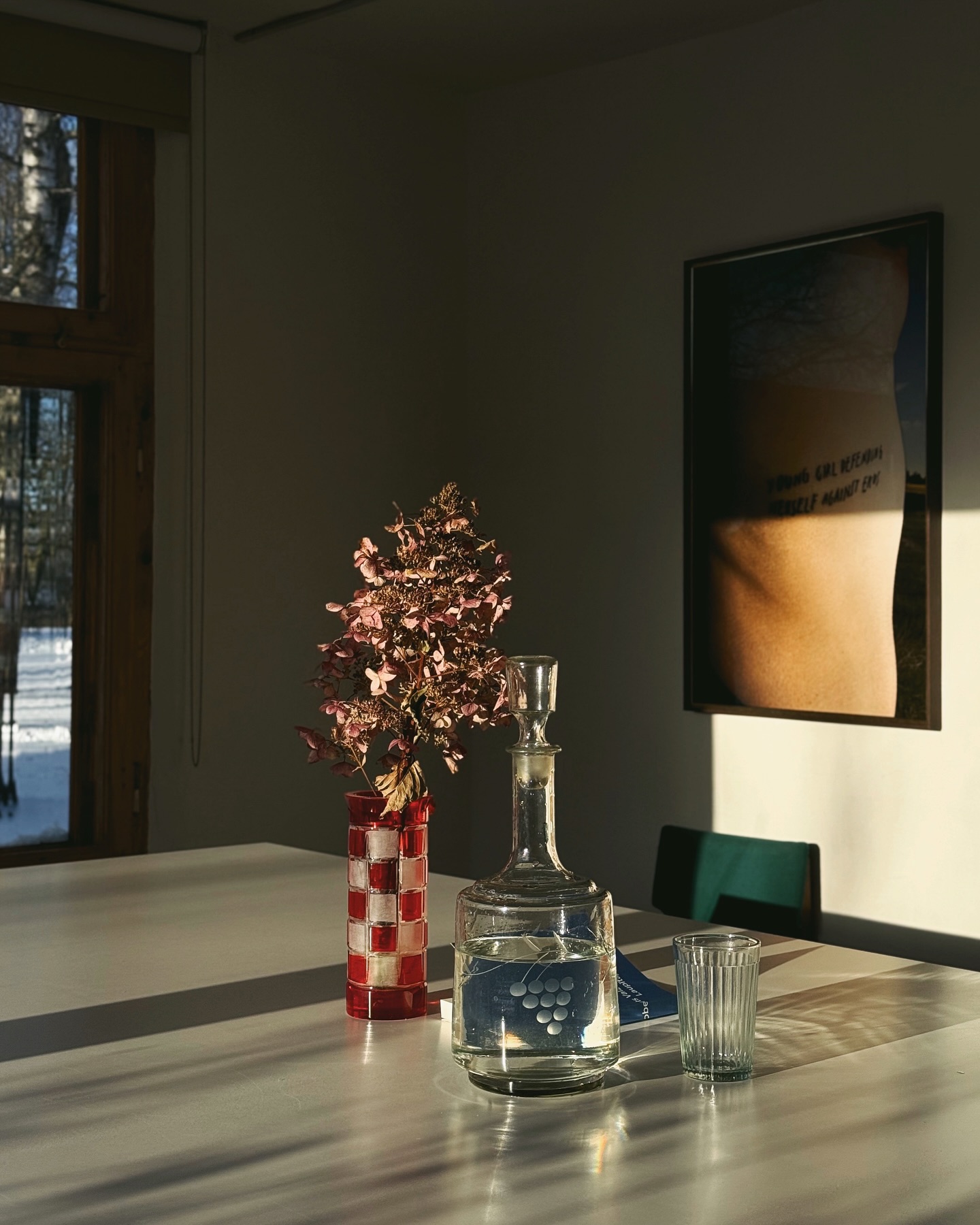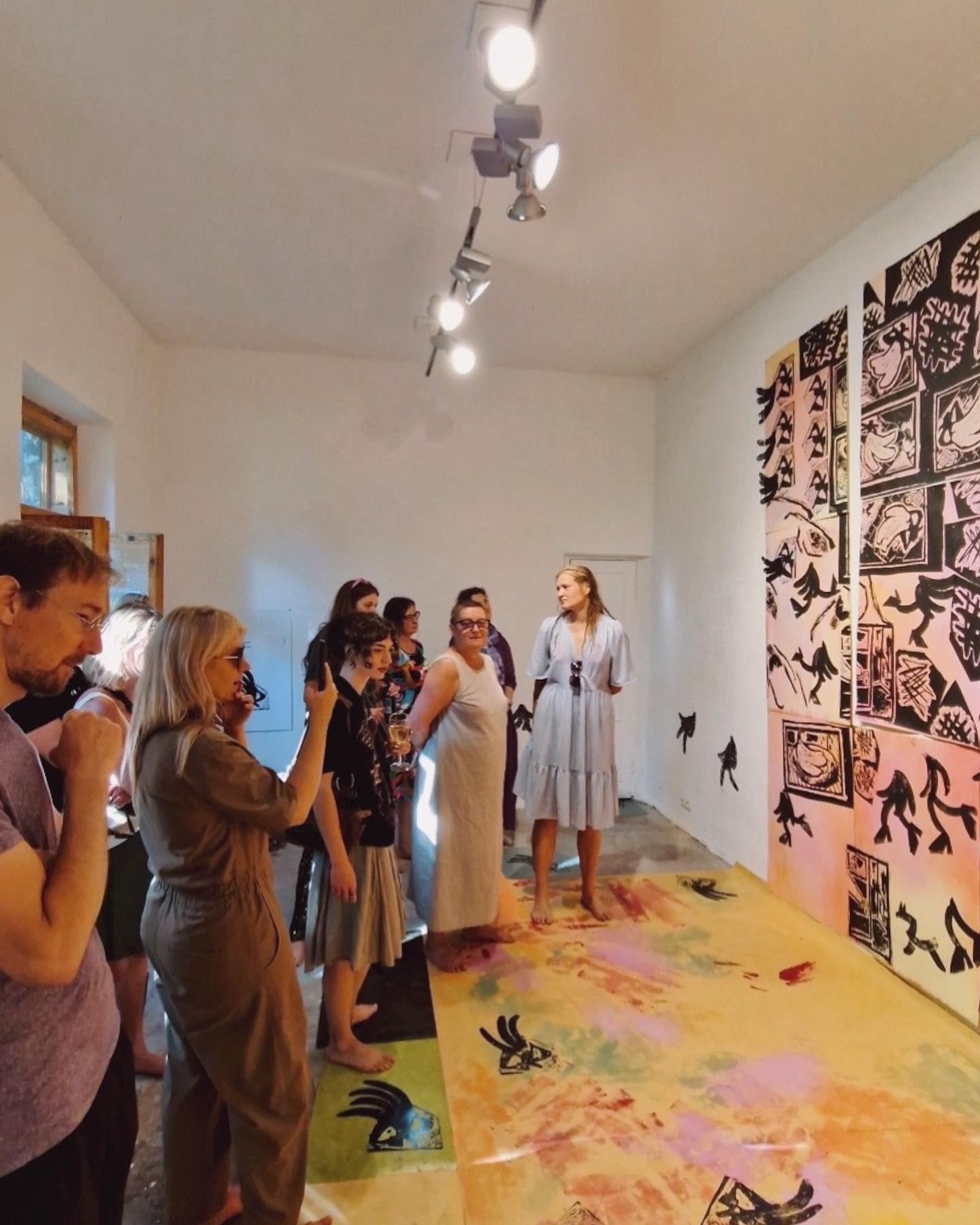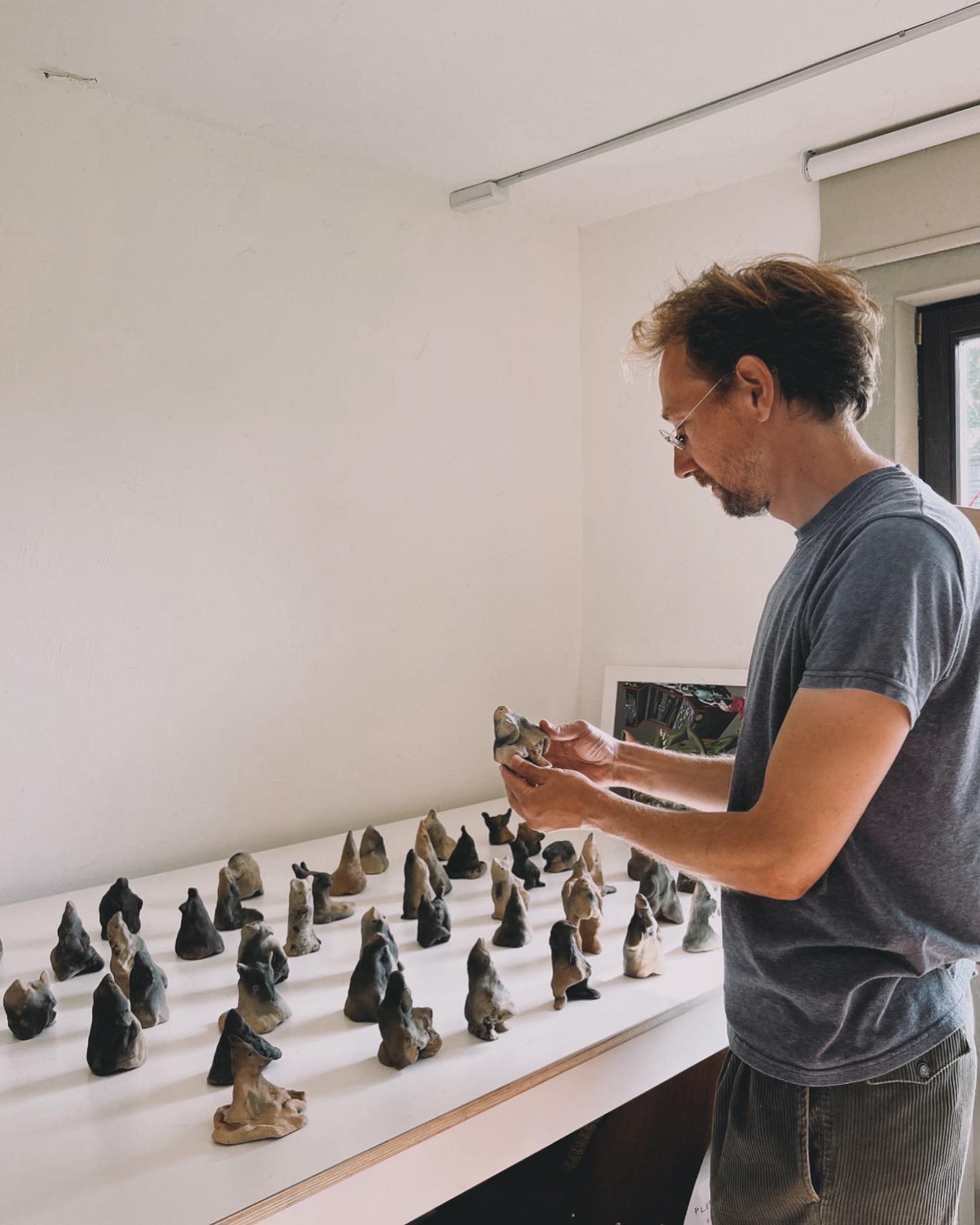Regaining a sense of belonging
PAiR Residency
PAiR - Pāvilosta Artist in Residency
PAiR Residency is an international interdisciplinary art residency that provides creative professionals with time, space and other resources for research, experimenting and professional development. The Residency is aimed at promoting the emergence of various new, world-exploring and reflective art forms, bringing together specialists from various fields for development of intercultural cooperation, interdisciplinary knowledge and promotion of location-related artistic research.
Latvia
Local
Pāvilosta
Mainly rural
It refers to a physical transformation of the built environment (hard investment)
Yes
2021-11-01
No
No
No
As a representative of an organisation
PAiR Residency aligns with the objectives of the New European Bauhaus by integrating sustainability, aesthetics, and inclusion into a cultural initiative. As a platform for interdisciplinary collaboration, it facilitates exchanges between artists, researchers, and curators, fostering connections between local heritage and global artistic innovation. Through creative experimentation and knowledge-sharing, PAiR strengthens cultural identity, enhances social cohesion, and promotes resilient, sustainable communities. Since its inception in 2021, it has hosted more than 60 residents from all over the globe.
Situated in a restored 1901 wooden building in Pāvilosta, PAiR demonstrates a commitment to sustainable architectural conservation while revitalising public spaces. The project adheres to environmental responsibility by minimising its footprint and incorporating traditional craftsmanship. By prioritising environmentally conscious artistic practices, the residency fosters deeper engagement with sustainability in the cultural sector.
PAiR also engages the wider community through exhibitions, workshops, and cultural activities. These initiatives democratise access to contemporary culture while reinforcing Pāvilosta’s social fabric. The introduction of public art, a gallery, a library, and a communal garden enhances the urban and social landscape, creating an inclusive cultural environment.
The project addresses rural depopulation and limited cultural infrastructure by positioning Pāvilosta as a hub for creative exchange and artistic development. By attracting international cultural professionals, PAiR contributes to local economic diversification while showcasing the role of cultural industries in fostering sustainable development. By bridging tradition with innovation, PAiR serves as a replicable model for rural cultural regeneration, demonstrating the potential of culture-led transformation in line with the strategic priorities of the New European Bauhaus.
Situated in a restored 1901 wooden building in Pāvilosta, PAiR demonstrates a commitment to sustainable architectural conservation while revitalising public spaces. The project adheres to environmental responsibility by minimising its footprint and incorporating traditional craftsmanship. By prioritising environmentally conscious artistic practices, the residency fosters deeper engagement with sustainability in the cultural sector.
PAiR also engages the wider community through exhibitions, workshops, and cultural activities. These initiatives democratise access to contemporary culture while reinforcing Pāvilosta’s social fabric. The introduction of public art, a gallery, a library, and a communal garden enhances the urban and social landscape, creating an inclusive cultural environment.
The project addresses rural depopulation and limited cultural infrastructure by positioning Pāvilosta as a hub for creative exchange and artistic development. By attracting international cultural professionals, PAiR contributes to local economic diversification while showcasing the role of cultural industries in fostering sustainable development. By bridging tradition with innovation, PAiR serves as a replicable model for rural cultural regeneration, demonstrating the potential of culture-led transformation in line with the strategic priorities of the New European Bauhaus.
Sustainability
Heritage
Creativity
Community
Innovation
From its inception, PAiR was designed with a deep respect for its surroundings. Situated on the Baltic Sea in Pāvilosta, it operates within a landscape where Northern nature and centuries-old traditions – fishing, herb foraging, and wood architecture—have shaped local identity. Given the region’s environmental and historical significance, integrating an art residency required an approach that enhances the balance between development and integrity.
Sustainability is a core principle of PAiR, embedded in both its infrastructure and operational model. Located on the edge of the 42-hectare Grey Dune nature reserve, the residency adheres to principles of minimising ecological impact, conservation & environmental responsibility.
The residency building, a historic 1901 wooden structure in the town’s centre that stood abandoned for 20 years, was restored using traditional materials and techniques, ensuring architectural integrity while contributing to Pāvilosta’s historic preservation strategy. This approach reinforces the coexistence of innovation and heritage, setting a precedent for sustainable cultural infrastructure in rural contexts.
PAiR also promotes sustainability through hands-on approach. The residency has a communal greenhouse that provides a shared space to engage with sustainable food production. Workshops with Pāvilosta foragers on the use of local herbs in medicine and culinary, reconnecting participants with environmentally conscious practices that have been part of the region’s heritage for centuries.
PAiR mitigates the environmental impact of cultural tourism by discouraging over-consumption, promoting low-impact engagement, and fostering sustainable artistic production. Residents are encouraged to interact with the surroundings in a non-intrusive, responsible manner. By integrating nature-conscious practices, architectural conservation, and responsible cultural tourism, PAiR exemplifies a sustainable model for art institutions.
Sustainability is a core principle of PAiR, embedded in both its infrastructure and operational model. Located on the edge of the 42-hectare Grey Dune nature reserve, the residency adheres to principles of minimising ecological impact, conservation & environmental responsibility.
The residency building, a historic 1901 wooden structure in the town’s centre that stood abandoned for 20 years, was restored using traditional materials and techniques, ensuring architectural integrity while contributing to Pāvilosta’s historic preservation strategy. This approach reinforces the coexistence of innovation and heritage, setting a precedent for sustainable cultural infrastructure in rural contexts.
PAiR also promotes sustainability through hands-on approach. The residency has a communal greenhouse that provides a shared space to engage with sustainable food production. Workshops with Pāvilosta foragers on the use of local herbs in medicine and culinary, reconnecting participants with environmentally conscious practices that have been part of the region’s heritage for centuries.
PAiR mitigates the environmental impact of cultural tourism by discouraging over-consumption, promoting low-impact engagement, and fostering sustainable artistic production. Residents are encouraged to interact with the surroundings in a non-intrusive, responsible manner. By integrating nature-conscious practices, architectural conservation, and responsible cultural tourism, PAiR exemplifies a sustainable model for art institutions.
PAiR Residency has significantly contributed to the aesthetic and cultural revitalisation of Pāvilosta by attracting a diverse cohort of international creative professionals, including artists, curators, musicians, and researchers. By providing a stimulating and well-supported environment, the residency enables participants to develop their artistic practices while simultaneously generating cultural benefits for the local community.
Each season, PAiR delivers a high-quality cultural programme, including exhibitions, concerts, theatre performances, workshops, and public talks by the leading local and international creative professionals, positioning Pāvilosta as a regional center for contemporary art. These initiatives enhance community engagement, share knowledge, and preserve local heritage while integrating it into contemporary creative practices. The residency’s commitment to public space transformation is evident in the restoration of its historic wooden building, the integration of public art, and the creation of a gallery, library and communal garden, all of which contribute to an inclusive cultural ecosystem. Visitors can also enjoy a permanent contemporary art collection both inside & outside of the PAiR building.
PAiR serves as an exemplary model for the integration of artistic and architectural heritage into regional development strategies. Historically reliant on commercial fishing, Pāvilosta experienced economic decline due to shifting market conditions, emigration, and climate change. PAiR has facilitated a transition toward sustainable, community-driven cultural industries, reinforcing local identity while fostering economic resilience. Today, the town attracts visitors from across Europe, solidifying its role as a cultural hub in Kurzeme. The case of PAiR demonstrates that contemporary art and local heritage can coexist, revitalising small communities without disrupting their traditions.
Each season, PAiR delivers a high-quality cultural programme, including exhibitions, concerts, theatre performances, workshops, and public talks by the leading local and international creative professionals, positioning Pāvilosta as a regional center for contemporary art. These initiatives enhance community engagement, share knowledge, and preserve local heritage while integrating it into contemporary creative practices. The residency’s commitment to public space transformation is evident in the restoration of its historic wooden building, the integration of public art, and the creation of a gallery, library and communal garden, all of which contribute to an inclusive cultural ecosystem. Visitors can also enjoy a permanent contemporary art collection both inside & outside of the PAiR building.
PAiR serves as an exemplary model for the integration of artistic and architectural heritage into regional development strategies. Historically reliant on commercial fishing, Pāvilosta experienced economic decline due to shifting market conditions, emigration, and climate change. PAiR has facilitated a transition toward sustainable, community-driven cultural industries, reinforcing local identity while fostering economic resilience. Today, the town attracts visitors from across Europe, solidifying its role as a cultural hub in Kurzeme. The case of PAiR demonstrates that contemporary art and local heritage can coexist, revitalising small communities without disrupting their traditions.
PAiR has always been committed to fostering an inclusive environment for its residents and audiences. Inclusion is its fundamental principle, ensuring that cultural participation and professional development opportunities are accessible to individuals regardless of financial means, background, or physical abilities.
PAiR removes financial barriers for artists by maintaining a fee-free application process and covering travel, accommodation, and production costs. Residents are supported in their creative work and daily needs, with additional provisions arranged for specific working materials. The residency also facilitates transportation to and from Pāvilosta, ensuring accessibility even for those unfamiliar with the region. The recently renovated residency building incorporates inclusive design principles, making its facilities accessible to individuals with diverse mobility requirements.
PAiR stands is one of the few Baltic art residencies to offer such comprehensive support, ensuring that artists from different socioeconomic backgrounds can participate without financial strain. This commitment extends to the broader community, as most public events, including exhibitions, workshops, and performances, are free of charge. The PAiR library and communal spaces are also open to all, fostering an environment where cultural engagement is not limited by financial constraints. PAiR also actively works with children, hosting a variety of workshops in collaboration with local art and musical schools - these workshops include ceramics, photography and making of instruments from natural materials.
PAiR has also responded to the war in Ukraine by providing direct support to displaced Ukrainian artists, assisting with relocation, legal matters, and funding. By integrating accessibility, affordability, and social responsibility, PAiR serves as an exemplary model of an inclusive, community-driven cultural space, ensuring that artistic expression remains open to all.
PAiR removes financial barriers for artists by maintaining a fee-free application process and covering travel, accommodation, and production costs. Residents are supported in their creative work and daily needs, with additional provisions arranged for specific working materials. The residency also facilitates transportation to and from Pāvilosta, ensuring accessibility even for those unfamiliar with the region. The recently renovated residency building incorporates inclusive design principles, making its facilities accessible to individuals with diverse mobility requirements.
PAiR stands is one of the few Baltic art residencies to offer such comprehensive support, ensuring that artists from different socioeconomic backgrounds can participate without financial strain. This commitment extends to the broader community, as most public events, including exhibitions, workshops, and performances, are free of charge. The PAiR library and communal spaces are also open to all, fostering an environment where cultural engagement is not limited by financial constraints. PAiR also actively works with children, hosting a variety of workshops in collaboration with local art and musical schools - these workshops include ceramics, photography and making of instruments from natural materials.
PAiR has also responded to the war in Ukraine by providing direct support to displaced Ukrainian artists, assisting with relocation, legal matters, and funding. By integrating accessibility, affordability, and social responsibility, PAiR serves as an exemplary model of an inclusive, community-driven cultural space, ensuring that artistic expression remains open to all.
Given its location, PAiR prioritises meaningful integration with local civil society. The knowledge, creativity, and resourcefulness of the local population have been instrumental in shaping the project's vision and long-term development. This symbiotic relationship is underscored by PAiR's commitment to reciprocate the community's support through targeted initiatives and sustained engagement.
A prime example is the establishment of a weaving studio within the residency - weaving has been a cornerstone of the region's heritage for centuries, and PAiR provides a modern, well-equipped workspace for these skilled practitioners. This initiative preserves traditional craftsmanship while fostering valuable exchange between heritage practitioners and contemporary artists in the region.
The residency's comprehensive program of public events serves as a dynamic platform for community engagement and cultural development. These freely accessible events facilitate knowledge exchange, connecting locals with contemporary culture and inspiring creativity across generations. By providing a stage for Pāvilosta's citizens, the residency amplifies local experiences internationally, fostering community pride and cultural exchange.
PAiR's role in attracting visitors has boosted the local economy and cultural landscape. In collaboration with local institutions, PAiR drives transformation towards a sustainable economy rooted in creative industries and cultural heritage. This shift emphasises eco-friendly tourism and locally conscious activities, moving away from traditional industrial fishing practices while respecting the community's maritime heritage.
The involvement of citizens has been pivotal to PAiR's success and sustainable development in the region. By preserving traditional crafts, empowering local voices, and stimulating economic growth through cultural initiatives, PAiR fosters a more vibrant, inclusive, and sustainable future for Pāvilosta.
A prime example is the establishment of a weaving studio within the residency - weaving has been a cornerstone of the region's heritage for centuries, and PAiR provides a modern, well-equipped workspace for these skilled practitioners. This initiative preserves traditional craftsmanship while fostering valuable exchange between heritage practitioners and contemporary artists in the region.
The residency's comprehensive program of public events serves as a dynamic platform for community engagement and cultural development. These freely accessible events facilitate knowledge exchange, connecting locals with contemporary culture and inspiring creativity across generations. By providing a stage for Pāvilosta's citizens, the residency amplifies local experiences internationally, fostering community pride and cultural exchange.
PAiR's role in attracting visitors has boosted the local economy and cultural landscape. In collaboration with local institutions, PAiR drives transformation towards a sustainable economy rooted in creative industries and cultural heritage. This shift emphasises eco-friendly tourism and locally conscious activities, moving away from traditional industrial fishing practices while respecting the community's maritime heritage.
The involvement of citizens has been pivotal to PAiR's success and sustainable development in the region. By preserving traditional crafts, empowering local voices, and stimulating economic growth through cultural initiatives, PAiR fosters a more vibrant, inclusive, and sustainable future for Pāvilosta.
The PAiR residency project engages stakeholders at local, regional, national, and European levels to ensure sustainable development and cultural exchange.
Locally, PAiR collaborates with Pāvilosta's municipal government, restoring a historic building into a contemporary art space and planning a sculpture park. This partnership attracts visitors, supports sustainable tourism, and benefits the town's environment and social fabric.
Regionally, PAiR engages with cultural institutions and educational establishments, facilitating artistic exchange and strengthening regional cultural networks through exhibitions and educational programs.
Nationally, PAiR aligns with Latvia's cultural and economic development goals, partnering with arts councils and tourism authorities to advance contemporary art and preserve traditional practices, enhancing Latvia's creative industries.
At the European level, PAiR reflects the New European Bauhaus principles, focusing on sustainability, aesthetics, and inclusion. Participation in European cultural networks enables PAiR to contribute to and benefit from innovative practices and cultural dialogue.
This stakeholder engagement strategy enhances PAiR's effectiveness and sustainability, ensuring deep community integration, expanding regional influence, securing national support, and positioning PAiR within the broader context of sustainable cultural development. PAiR's success demonstrates how strategic stakeholder engagement at multiple levels creates a resilient cultural institution that serves local needs while contributing to broader European cultural objectives. This approach establishes a sustainable model for cultural development that balances preservation with innovation, local identity with international exchange, and artistic excellence with community engagement.
Locally, PAiR collaborates with Pāvilosta's municipal government, restoring a historic building into a contemporary art space and planning a sculpture park. This partnership attracts visitors, supports sustainable tourism, and benefits the town's environment and social fabric.
Regionally, PAiR engages with cultural institutions and educational establishments, facilitating artistic exchange and strengthening regional cultural networks through exhibitions and educational programs.
Nationally, PAiR aligns with Latvia's cultural and economic development goals, partnering with arts councils and tourism authorities to advance contemporary art and preserve traditional practices, enhancing Latvia's creative industries.
At the European level, PAiR reflects the New European Bauhaus principles, focusing on sustainability, aesthetics, and inclusion. Participation in European cultural networks enables PAiR to contribute to and benefit from innovative practices and cultural dialogue.
This stakeholder engagement strategy enhances PAiR's effectiveness and sustainability, ensuring deep community integration, expanding regional influence, securing national support, and positioning PAiR within the broader context of sustainable cultural development. PAiR's success demonstrates how strategic stakeholder engagement at multiple levels creates a resilient cultural institution that serves local needs while contributing to broader European cultural objectives. This approach establishes a sustainable model for cultural development that balances preservation with innovation, local identity with international exchange, and artistic excellence with community engagement.
PAiR reflects a rich interaction among creatives, art patrons, and the local community, both from Latvia and abroad. This multidisciplinary approach has significantly shaped the project's design and implementation, integrating various knowledge fields.
Architects played a crucial role in renovating a century-old wooden building, blending modern design with historical preservation. Their work created a space that respects its heritage, setting the stage for creativity and community engagement.
Artists have left a lasting impact through their residencies —from paintings and photographs to graphic art and installations—to PAiR’s collection. This artistic input enriches the residency's cultural offerings and fosters a dynamic environment for creative exchange.
Traditional craft practitioners, such as weavers, work in the PAiR workshop, demonstrating the harmonious union of heritage and contemporary art. This integration adds a unique dimension to the project, highlighting the importance of preserving cultural heritage while embracing innovation.
The local population of Pāvilosta is integral to the project, sharing knowledge and creativity, and welcoming residents into their community. This interaction ensures that PAiR is deeply rooted in its surroundings, fostering a sense of belonging and mutual respect.
PAiR is designed as an open system, connected to its surroundings and evolving with each member's input. While contemporary art is its primary discipline, the residency also showcases modern architectural and design approaches in a small town setting. This multidisciplinary approach demonstrates that art can seamlessly integrate into a rural town's context, enriching it without damaging its character.
The added value of this multidisciplinary interaction lies in creating a vibrant, inclusive, and sustainable cultural ecosystem. By bringing together diverse fields, PAiR fosters innovation, preserves heritage, and promotes community engagement.
Architects played a crucial role in renovating a century-old wooden building, blending modern design with historical preservation. Their work created a space that respects its heritage, setting the stage for creativity and community engagement.
Artists have left a lasting impact through their residencies —from paintings and photographs to graphic art and installations—to PAiR’s collection. This artistic input enriches the residency's cultural offerings and fosters a dynamic environment for creative exchange.
Traditional craft practitioners, such as weavers, work in the PAiR workshop, demonstrating the harmonious union of heritage and contemporary art. This integration adds a unique dimension to the project, highlighting the importance of preserving cultural heritage while embracing innovation.
The local population of Pāvilosta is integral to the project, sharing knowledge and creativity, and welcoming residents into their community. This interaction ensures that PAiR is deeply rooted in its surroundings, fostering a sense of belonging and mutual respect.
PAiR is designed as an open system, connected to its surroundings and evolving with each member's input. While contemporary art is its primary discipline, the residency also showcases modern architectural and design approaches in a small town setting. This multidisciplinary approach demonstrates that art can seamlessly integrate into a rural town's context, enriching it without damaging its character.
The added value of this multidisciplinary interaction lies in creating a vibrant, inclusive, and sustainable cultural ecosystem. By bringing together diverse fields, PAiR fosters innovation, preserves heritage, and promotes community engagement.
PAiR, with its commitment to sustainability, inclusivity, and community engagement, embodies an innovative approach to art residencies. Unlike conventional models that operate in isolation, PAiR integrates artists into the fabric of Pāvilosta town, fostering meaningful interaction and exchange between residents and the locals. This open and participatory model enriches the artistic process and strengthens the cultural and social vitality of the community.
A key innovation lies in PAiR’s investment in local revitalisation. The project has meticulously restored a historic building, developed communal green spaces, and established publicly accessible facilities such as a library and gallery. These initiatives ensure that contemporary art reaches diverse audiences which are often excluded from cultural discourse. By creating inclusive spaces for education and dialogue, PAiR bridges the gap between art and community, fostering a sense of shared ownership and cultural identity. This approach puts the importance of creating beautiful, sustainable, and inclusive spaces at the forefront.
At its core, PAiR emphasises mutual exchange. Artists draw inspiration from the local environment and community, while residents benefit from exposure to new ideas and creative practices. This reciprocal relationship drives cultural and economic development, positioning PAiR as a catalyst for sustainable growth. The residency's commitment to preserving traditional crafts while embracing contemporary artistic practices further enriches this dynamic, making it a unique and valuable contributor to the cultural landscape.
Through its innovative approach, PAiR demonstrates how art residencies can transcend traditional boundaries to become engines of social and cultural transformation. It offers a replicable model for integrating art into underserved regions – by fostering a deep connection between artists and the community, PAiR sets a new standard for how art creates positive change.
A key innovation lies in PAiR’s investment in local revitalisation. The project has meticulously restored a historic building, developed communal green spaces, and established publicly accessible facilities such as a library and gallery. These initiatives ensure that contemporary art reaches diverse audiences which are often excluded from cultural discourse. By creating inclusive spaces for education and dialogue, PAiR bridges the gap between art and community, fostering a sense of shared ownership and cultural identity. This approach puts the importance of creating beautiful, sustainable, and inclusive spaces at the forefront.
At its core, PAiR emphasises mutual exchange. Artists draw inspiration from the local environment and community, while residents benefit from exposure to new ideas and creative practices. This reciprocal relationship drives cultural and economic development, positioning PAiR as a catalyst for sustainable growth. The residency's commitment to preserving traditional crafts while embracing contemporary artistic practices further enriches this dynamic, making it a unique and valuable contributor to the cultural landscape.
Through its innovative approach, PAiR demonstrates how art residencies can transcend traditional boundaries to become engines of social and cultural transformation. It offers a replicable model for integrating art into underserved regions – by fostering a deep connection between artists and the community, PAiR sets a new standard for how art creates positive change.
PAiR adopts a comprehensive and inclusive methodology designed to bridge the gap between artists, the local community, and the environment. Unlike conventional residencies that often operate in isolation, PAiR actively integrates resident artists into the daily life of Pāvilosta. This is achieved through a series of open studios, workshops, lectures, and public events that facilitate knowledge-sharing and foster meaningful dialogue. These initiatives create a dynamic exchange of ideas, ensuring mutual enrichment for both artists and the community.
At its core, PAiR emphasises the creation of a reflective and supportive environment. In contrast to the competitive and often alienating nature of the contemporary art industry, particularly in urban centres, PAiR offers a tranquil setting that prioritises well-being and creative development. The project provides extensive support to artists, including logistical, financial, and informational assistance, addressing the precarious circumstances many face. This nurturing approach allows artists to focus on their practice, free from external pressures, and encourages experimentation and innovation.
Additionally, PAiR takes a long-term view in supporting creatives. Beyond the residency period, the project maintains ongoing relationships with artists, seeking opportunities to promote their work and sustain their professional growth. This commitment extends to both emerging and established artists, ensuring a diverse and inclusive cultural ecosystem.
By combining community engagement, holistic support, and a focus on sustainability, PAiR’s methodology sets a new standard for art residencies. It demonstrates how cultural initiatives can drive social and economic development in rural areas, aligning with the principles of the New European Bauhaus. This innovative approach enriches the artistic process and strengthens the cultural and social vitality of the community, fostering a sense of shared ownership and identity.
At its core, PAiR emphasises the creation of a reflective and supportive environment. In contrast to the competitive and often alienating nature of the contemporary art industry, particularly in urban centres, PAiR offers a tranquil setting that prioritises well-being and creative development. The project provides extensive support to artists, including logistical, financial, and informational assistance, addressing the precarious circumstances many face. This nurturing approach allows artists to focus on their practice, free from external pressures, and encourages experimentation and innovation.
Additionally, PAiR takes a long-term view in supporting creatives. Beyond the residency period, the project maintains ongoing relationships with artists, seeking opportunities to promote their work and sustain their professional growth. This commitment extends to both emerging and established artists, ensuring a diverse and inclusive cultural ecosystem.
By combining community engagement, holistic support, and a focus on sustainability, PAiR’s methodology sets a new standard for art residencies. It demonstrates how cultural initiatives can drive social and economic development in rural areas, aligning with the principles of the New European Bauhaus. This innovative approach enriches the artistic process and strengthens the cultural and social vitality of the community, fostering a sense of shared ownership and identity.
PAiR offers a highly adaptable model that can be successfully implemented in diverse settings, both within the Baltic region and beyond. Its core elements - community integration, historic preservation, and long-term artist support - provide a framework for vibrant cultural ecosystems in similar environments.
PAiR’s methodology of integrating artists into local communities through open studios, workshops, and public events is easily replicable. This approach encourages meaningful interaction and knowledge exchange, benefiting both artists and residents. The creation of a supportive environment, including logistical, financial, and informational assistance, allows artists to focus on their practice without external pressures, a model that can be adopted by other residencies.
By collaborating with local stakeholders, historic buildings in small towns can be restored and repurposed as creative hubs to preserve cultural heritage and generate opportunities for artistic and public engagement. A diverse program of exhibitions, workshops, and community projects can be replicated to foster shared ownership and cultural identity.
PAiR’s commitment to maintaining relationships with artists beyond the residency period ensures sustained professional growth and promotes inclusivity. This long-term support model can be adapted to nurture emerging artists, creating dynamic creative communities.
The soft skills developed through PAiR - such as communication, negotiation, and stakeholder engagement - are transferable to other contexts. Building trust and fostering collaboration are essential for the success of similar initiatives.
PAiR’s focus on preserving heritage while embracing contemporary art is particularly suited to the Baltics, where many towns share characteristics with Pāvilosta, Its model can also be adapted to other regions, addressing the demand for quality residencies and positively impacting local economies and social climates.
PAiR’s methodology of integrating artists into local communities through open studios, workshops, and public events is easily replicable. This approach encourages meaningful interaction and knowledge exchange, benefiting both artists and residents. The creation of a supportive environment, including logistical, financial, and informational assistance, allows artists to focus on their practice without external pressures, a model that can be adopted by other residencies.
By collaborating with local stakeholders, historic buildings in small towns can be restored and repurposed as creative hubs to preserve cultural heritage and generate opportunities for artistic and public engagement. A diverse program of exhibitions, workshops, and community projects can be replicated to foster shared ownership and cultural identity.
PAiR’s commitment to maintaining relationships with artists beyond the residency period ensures sustained professional growth and promotes inclusivity. This long-term support model can be adapted to nurture emerging artists, creating dynamic creative communities.
The soft skills developed through PAiR - such as communication, negotiation, and stakeholder engagement - are transferable to other contexts. Building trust and fostering collaboration are essential for the success of similar initiatives.
PAiR’s focus on preserving heritage while embracing contemporary art is particularly suited to the Baltics, where many towns share characteristics with Pāvilosta, Its model can also be adapted to other regions, addressing the demand for quality residencies and positively impacting local economies and social climates.
PAiR tackles the pressing global challenge of rural community decline, driven by economic crises, migration, climate change, and demographic shifts, by offering a sustainable cultural model that strengthens local identity and resilience. Pāvilosta, a small Latvian town with fewer than a thousand residents, exemplifies the struggles faced by many rural communities across Europe. Situated between the larger port cities of Ventspils and Liepāja, Pāvilosta experienced economic stagnation as its traditional fishing industry declined and younger generations migrated to urban centres in search of better opportunities.
Seasonal tourism, once seen as a potential alternative, proved unsustainable due to limited infrastructure and competition from larger coastal cities. This reliance on a single, extractive industry is a common issue in rural regions, where achieving long-term economic and social stability remains a significant challenge.
PAiR has introduced a transformative creative industry model, providing Pāvilosta with a sustainable, future-oriented solution. By positioning the town as a cultural destination, PAiR has diversified the local economy, attracting international artists, cultural professionals, and visitors year-round. The residency creates opportunities for local residents to engage in cultural activities, creative expression, and professional development, while fostering intergenerational connections and preserving regional heritage.
By integrating contemporary artistic practice into a historically and ecologically rich landscape, PAiR demonstrates how small communities can adapt to global changes while retaining their unique identity. The project offers a replicable model for other rural areas seeking to transition from economic dependency and population decline toward sustainable, community-led development, ensuring long-term cultural and economic vitality.
Seasonal tourism, once seen as a potential alternative, proved unsustainable due to limited infrastructure and competition from larger coastal cities. This reliance on a single, extractive industry is a common issue in rural regions, where achieving long-term economic and social stability remains a significant challenge.
PAiR has introduced a transformative creative industry model, providing Pāvilosta with a sustainable, future-oriented solution. By positioning the town as a cultural destination, PAiR has diversified the local economy, attracting international artists, cultural professionals, and visitors year-round. The residency creates opportunities for local residents to engage in cultural activities, creative expression, and professional development, while fostering intergenerational connections and preserving regional heritage.
By integrating contemporary artistic practice into a historically and ecologically rich landscape, PAiR demonstrates how small communities can adapt to global changes while retaining their unique identity. The project offers a replicable model for other rural areas seeking to transition from economic dependency and population decline toward sustainable, community-led development, ensuring long-term cultural and economic vitality.
PAiR has revitalised Pāvilosta’s cultural landscape, fostering a renewed sense of belonging among residents and establishing the town as a key cultural destination on Latvia’s west coast. By integrating contemporary art with local traditions, PAiR enhances both the physical and cultural environment.
The PAiR Public Programme engages local residents, visitors, and international artists, strengthening Pāvilosta’s identity and encouraging cultural exchange. The residency also provides accessible cultural infrastructure, benefiting both its guests and the wider community. These initiatives have also created new opportunities for education, professional development, and creative collaboration.
PAiR’s commitment to inclusion ensures artists from diverse backgrounds can participate without economic barriers, fostering a vibrant and diverse creative community. The 2025 residency cohort, featuring artists from the US, Germany, Latvia, Georgia and Estonia, exemplifies this inclusive approach, bringing fresh perspectives and innovative practices to Pāvilosta. Recent developments, such as the appointment of Krist Gruijthuijsen, former director of KW Institute for Contemporary Art, as the residency’s programme curator, highlight PAiR’s dedication to advancing contemporary art and culture. Gruijthuijsen’s expertise will further elevate the programme’s artistic vision, ensuring it remains at the forefront of innovative cultural practices.
By embedding contemporary art in a historically rich landscape, PAiR attracts international professionals, diversifies the local economy, and reduces reliance on seasonal tourism. For artists, PAiR offers a unique environment for growth, while residents gain access to high-quality cultural programming. PAiR serves as a scalable model for rural communities, demonstrating how arts-led regeneration drives inclusive, sustainable development and addresses global challenges like rural decline.
The PAiR Public Programme engages local residents, visitors, and international artists, strengthening Pāvilosta’s identity and encouraging cultural exchange. The residency also provides accessible cultural infrastructure, benefiting both its guests and the wider community. These initiatives have also created new opportunities for education, professional development, and creative collaboration.
PAiR’s commitment to inclusion ensures artists from diverse backgrounds can participate without economic barriers, fostering a vibrant and diverse creative community. The 2025 residency cohort, featuring artists from the US, Germany, Latvia, Georgia and Estonia, exemplifies this inclusive approach, bringing fresh perspectives and innovative practices to Pāvilosta. Recent developments, such as the appointment of Krist Gruijthuijsen, former director of KW Institute for Contemporary Art, as the residency’s programme curator, highlight PAiR’s dedication to advancing contemporary art and culture. Gruijthuijsen’s expertise will further elevate the programme’s artistic vision, ensuring it remains at the forefront of innovative cultural practices.
By embedding contemporary art in a historically rich landscape, PAiR attracts international professionals, diversifies the local economy, and reduces reliance on seasonal tourism. For artists, PAiR offers a unique environment for growth, while residents gain access to high-quality cultural programming. PAiR serves as a scalable model for rural communities, demonstrating how arts-led regeneration drives inclusive, sustainable development and addresses global challenges like rural decline.

